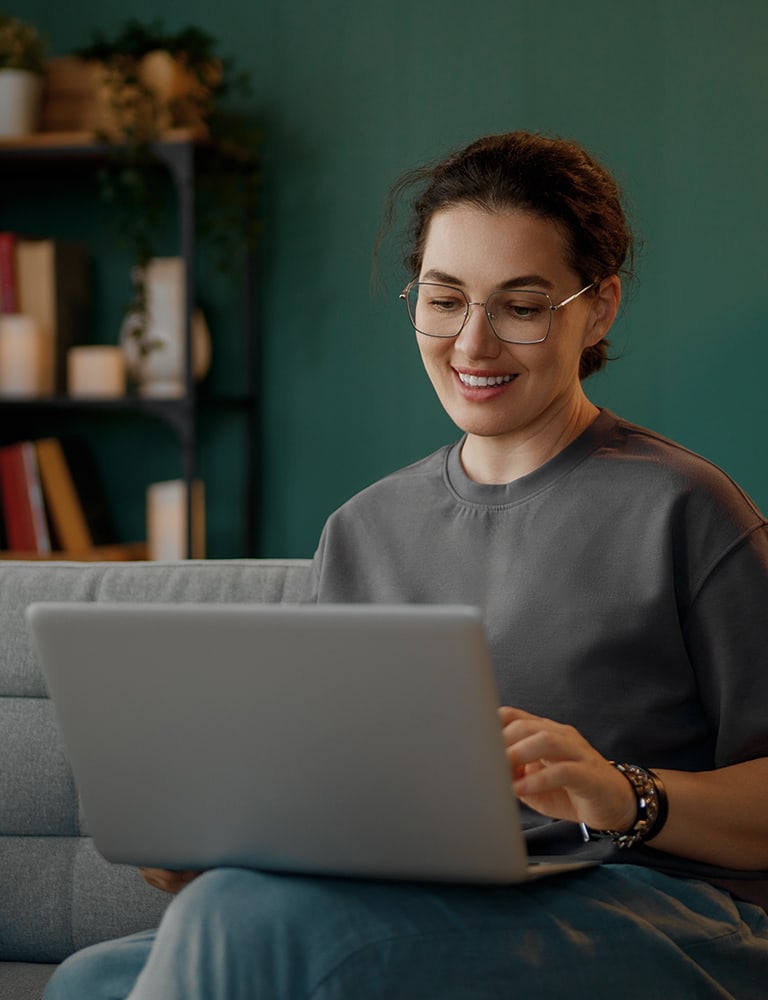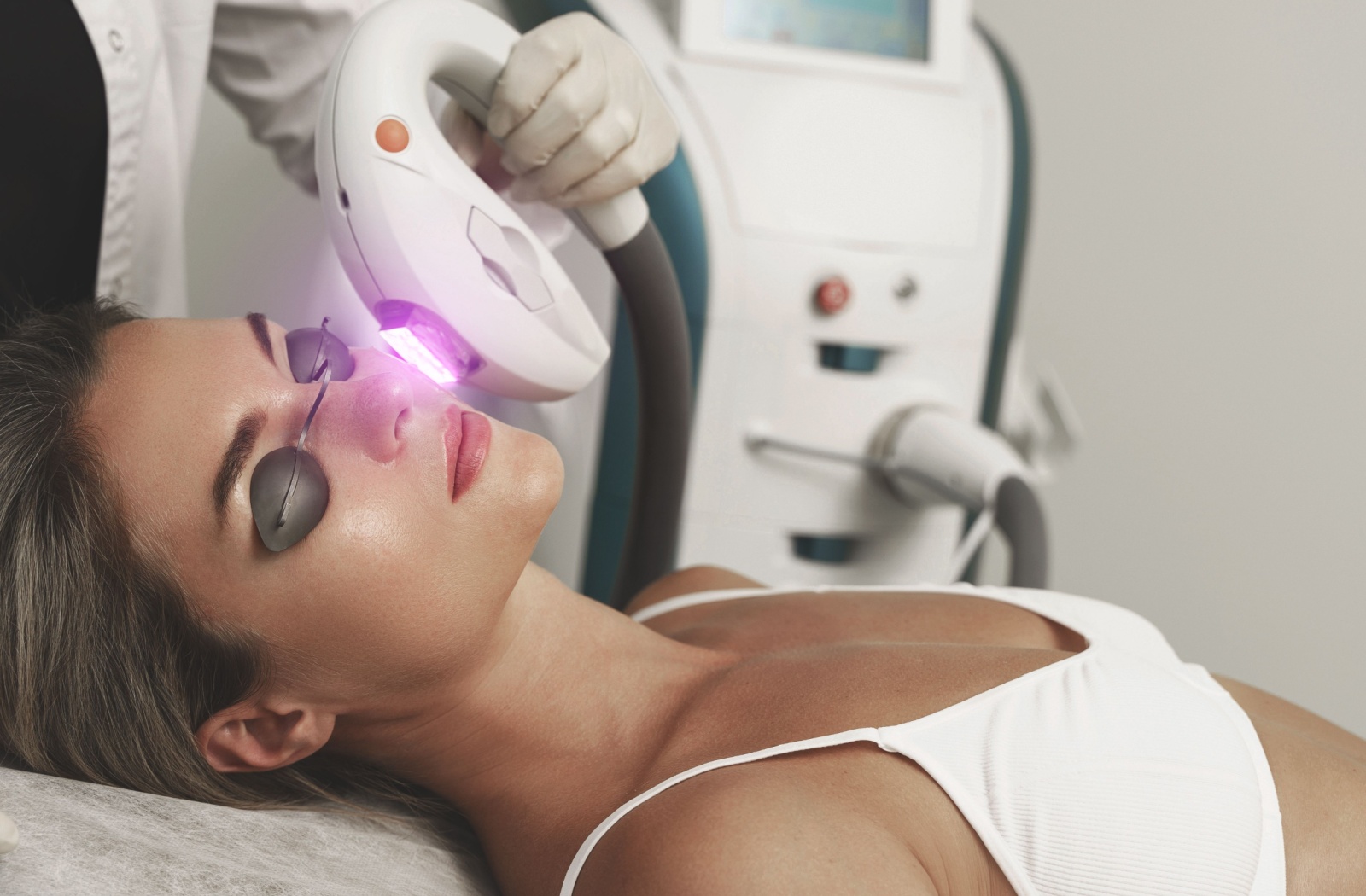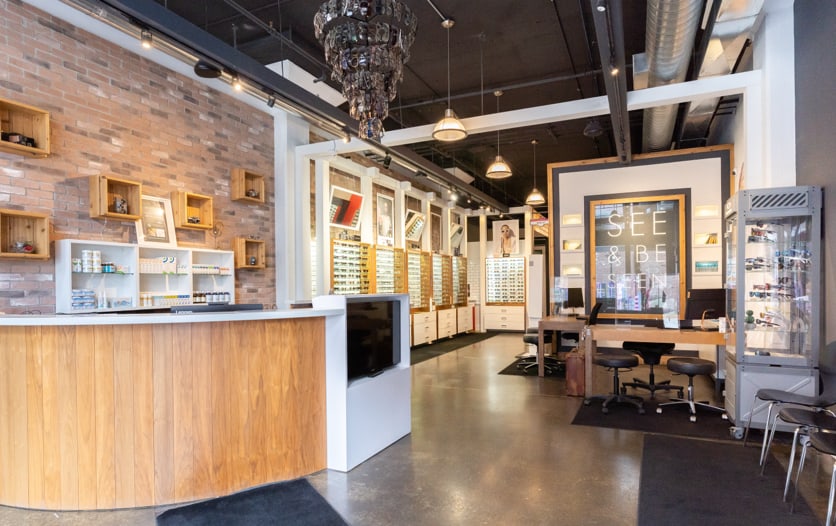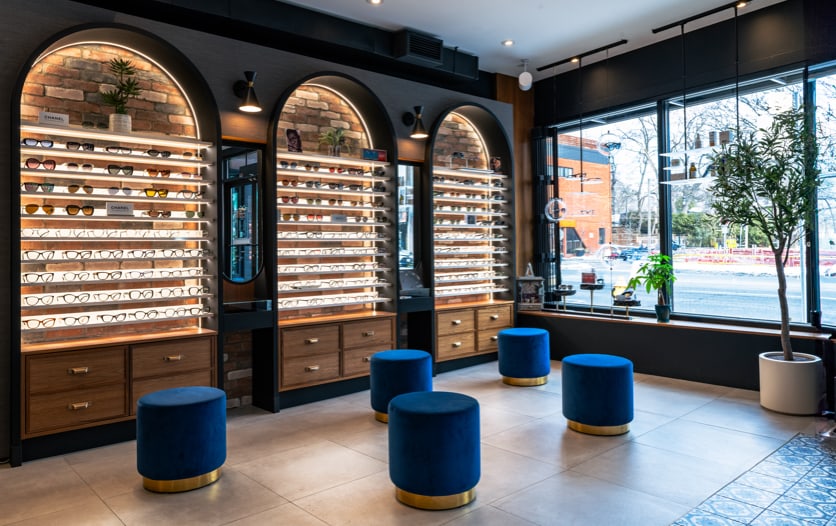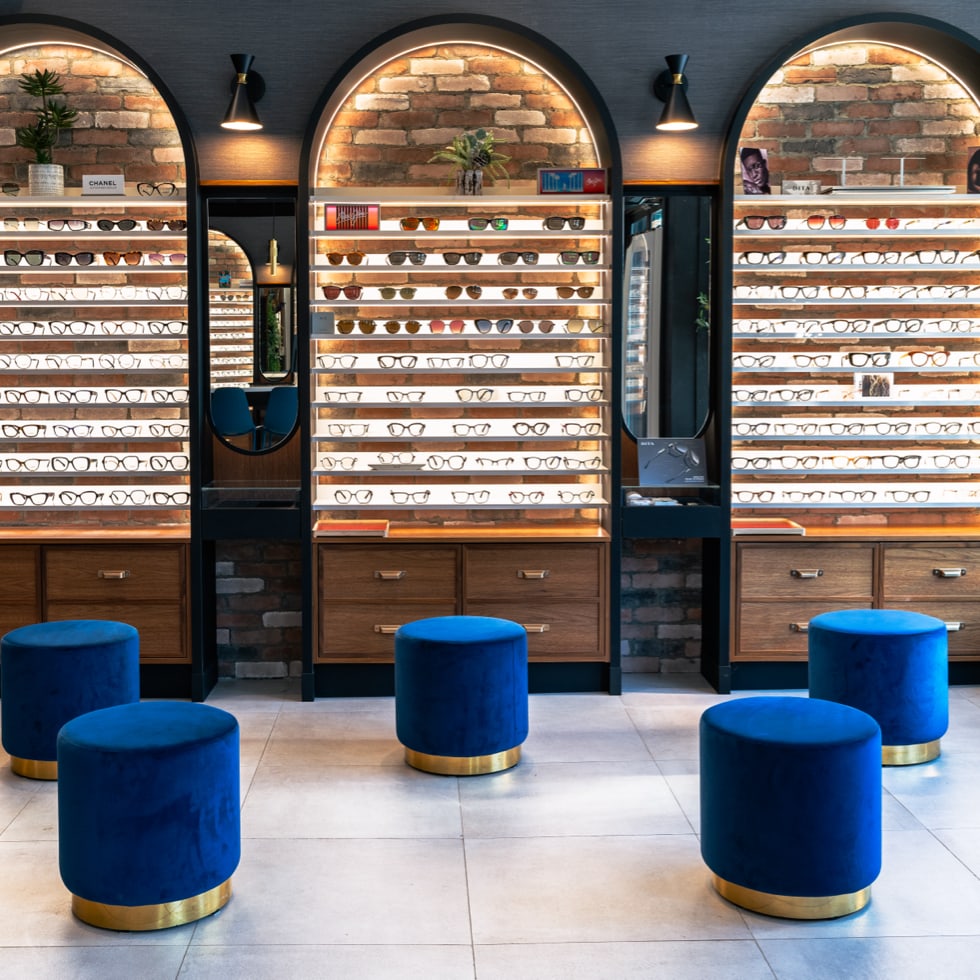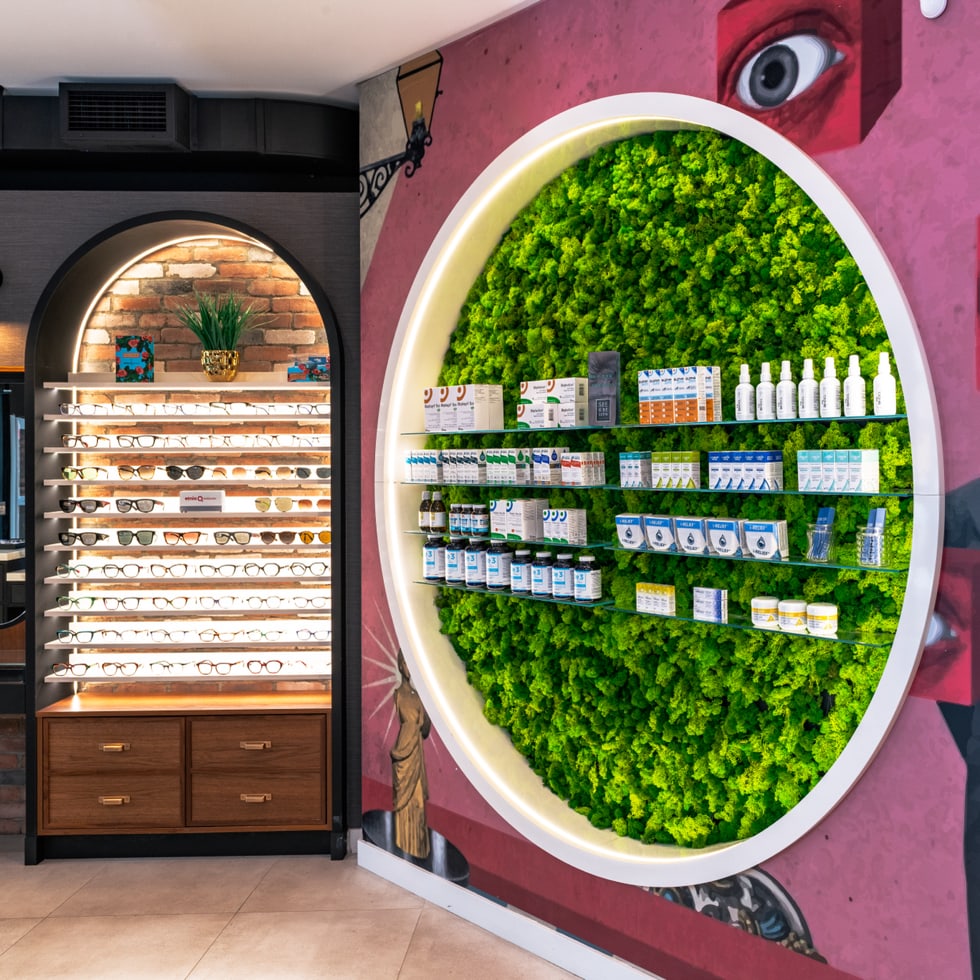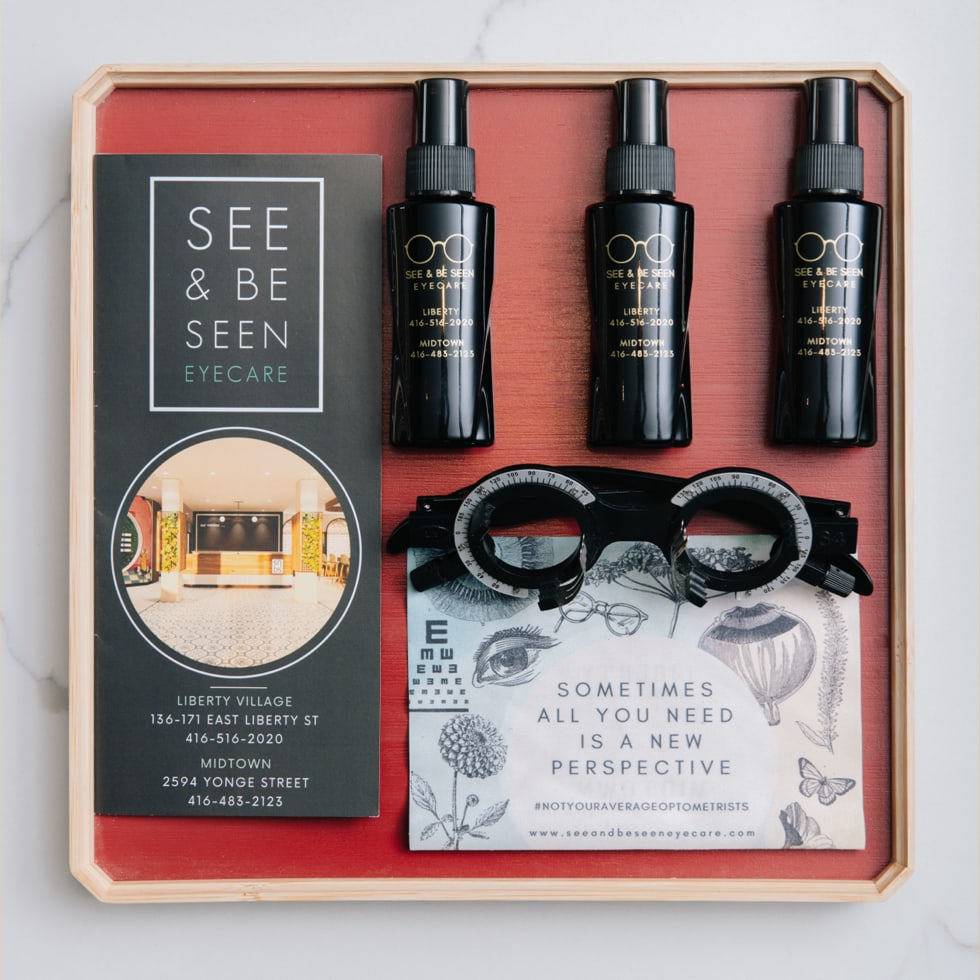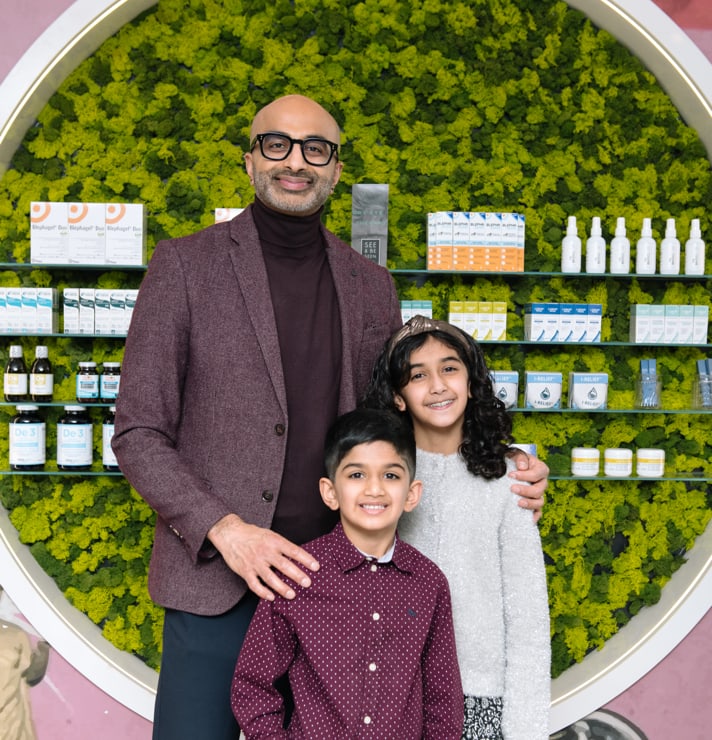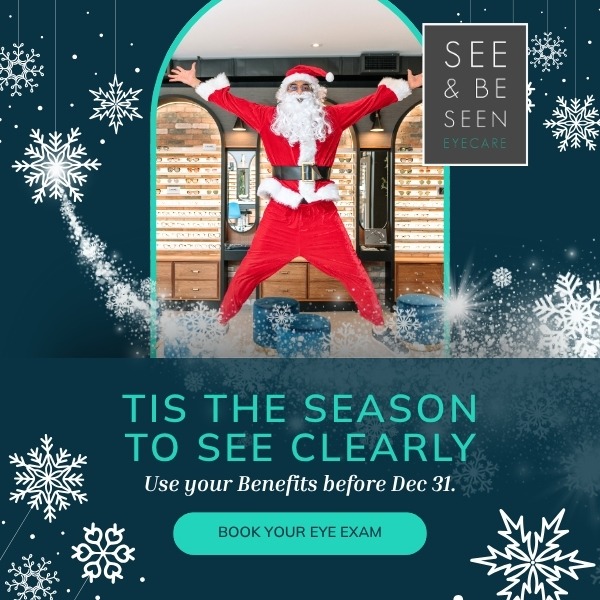If you’ve started noticing more sunspots, redness, or uneven skin tone as the years go by, you’re not alone. These changes are often just part of the natural aging process. As our collagen levels decline and our skin gets thinner, signs of sun damage and other imperfections become more visible. Fortunately, there’s a noninvasive treatment that can help turn back the clock on your skin—intense pulsed light (IPL) photofacials.
IPL photofacials work by delivering targeted pulses of broad-spectrum light into the skin, where the light energy breaks down pigmentation, reduces inflammation, and stimulates collagen production for a clearer, more even complexion. This same light-based technology is also used around the eyes to treat dry eye symptoms by improving the function of the meibomian glands and reducing inflammation caused by ocular rosacea.
But how does an IPL photofacial work, and what makes it such a popular option for skin and eye rejuvenation? Let’s break it down.
What Is an IPL Photofacial?
IPL photofacial therapy is a noninvasive cosmetic treatment that uses light energy to improve the appearance of the skin. It targets a range of common skin concerns like:
- Sun damage
- Age spots and freckles
- Rosacea and redness
- Spider veins
- Fine lines and wrinkles
- Uneven skin tone and texture
Rather than using a single focused wavelength of light (like traditional lasers), IPL delivers a broad spectrum of light that penetrates the skin and targets pigment cells and blood vessels just below the surface. The light energy is converted into heat, which helps break down unwanted pigment and stimulate collagen production—all without damaging surrounding tissue.
How IPL Works on Your Skin
During an IPL treatment, a handheld device is used to emit intense pulses of light into the skin. The wavelengths are selected to specifically target:
- Melanin, the pigment responsible for dark spots
- Hemoglobin, the substance in blood that causes redness from spider veins or rosacea
As the light penetrates the skin, it heats and destroys these pigmented or damaged cells. Over the following days and weeks, your body naturally eliminates them, revealing fresher, clearer skin underneath. At the same time, collagen production increases, helping to smooth fine lines and improve skin elasticity.
When Will You See Results?
Many people start seeing improvements in their skin within a few days after their first treatment. However, the most noticeable results usually appear after a series of sessions—typically 3 to 6 treatments spaced about 4 weeks apart.
As collagen continues to rebuild and pigmentation fades, your skin will gradually look smoother, brighter, and more even. Maintenance sessions every 6 to 12 months can help preserve the results.

How IPL Therapy Helps Treat Dry Eyes & Styes
Intense pulsed light (IPL) therapy is an in-office treatment that can effectively reduce the symptoms of dry eye disease and treat recurring styes. Originally developed for skin rejuvenation, IPL has been clinically adapted to support eye health—particularly in patients with meibomian gland dysfunction (MGD), a common cause of dry eyes.
How IPL Works for Dry Eyes
IPL uses controlled pulses of light to gently warm the skin around the eyes. This heat penetrates the tissue and targets inflammation, helping to improve the function of the oil-producing meibomian glands in your eyelids. These glands are essential for a healthy tear film, as they secrete oils that prevent tears from evaporating too quickly.
By liquefying hardened oils and reducing blockages, IPL allows the glands to release a more consistent, high-quality oil layer—resulting in better eye lubrication and relief from burning, gritty, or watery eyes.
What to Expect During Treatment
During your IPL session:
- A cooling gel is applied to the treatment area.
- Protective eye shields are placed to keep your eyes safe.
- A handheld IPL device is used to deliver gentle light pulses just below your eyes.
Most sessions last 15–20 minutes, and patients typically feel only mild warmth or a slight snapping sensation during treatment. There’s minimal downtime—you can resume most normal activities immediately after.
Why Choose IPL for Dry Eye Relief?
- Noninvasive: No needles, incisions, or surgical recovery
- Targets the root cause: Treats inflammation and meibomian gland blockages
- Quick treatment sessions: Around 20 minutes per session
- Cumulative results: Improvement often seen after a series of 3–4 treatments
- Bonus cosmetic benefits: Reduces redness, sun damage, and skin discolouration
Is IPL Right for You?
IPL therapy may be a good fit if you:
- Have been diagnosed with dry eye disease or MGD
- Experience recurring styes or eyelid inflammation
- Have rosacea or visible vessels around the eyes
- Haven’t found lasting relief with eye drops or warm compresses
However, IPL may not be recommended if you have very dark skin, certain skin conditions, or are taking medications that cause light sensitivity. A thorough dry eye assessment can determine your candidacy.
Aftercare Tips for Best Results
After your treatment:
- Avoid direct sun exposure for at least 1 week.
- Apply SPF 30+ daily, even if it’s cloudy.
- Use gentle, fragrance-free skincare products.
- Avoid hot yoga, saunas, or heavy sweating for 48 hours.
- Don’t pick at any temporary flaking or dryness around treated areas.
Discover IPL Photofacials in Toronto
At See & Be Seen Eyecare in Liberty Village and Midtown in Toronto, we offer IPL therapy tailored to treat dry eyes at the source. Our experienced optometrists can assess your tear film and gland function to build a customized treatment plan that targets both symptoms and root causes.
Book an appointment today to learn how IPL can help you feel more comfortable, reduce eye inflammation, and even improve the skin around your eyes—all without surgery or downtime.
